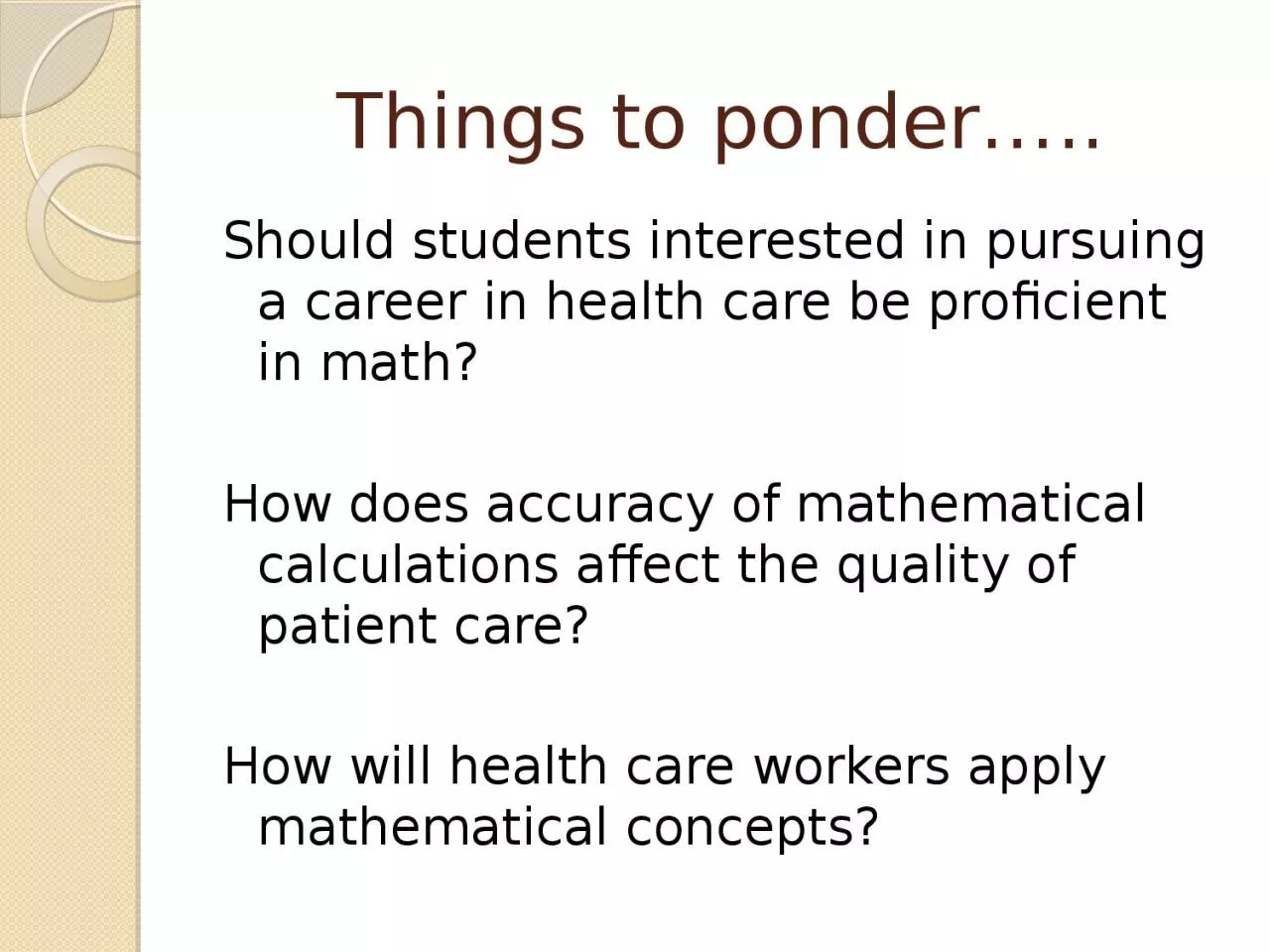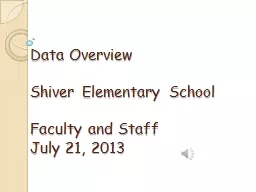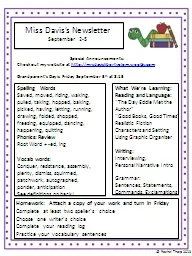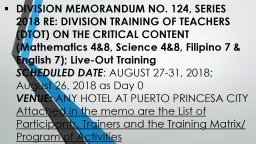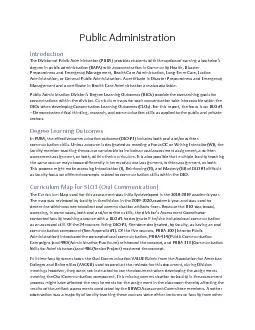PPT-Things to ponder….. Should students interested in pursuing a career in health care be
Author : holly | Published Date : 2024-02-09
How does accuracy of mathematical calculations affect the quality of patient care How will health care workers apply mathematical concepts Are mathematical calculations
Presentation Embed Code
Download Presentation
Download Presentation The PPT/PDF document "Things to ponder….. Should students in..." is the property of its rightful owner. Permission is granted to download and print the materials on this website for personal, non-commercial use only, and to display it on your personal computer provided you do not modify the materials and that you retain all copyright notices contained in the materials. By downloading content from our website, you accept the terms of this agreement.
Things to ponder….. Should students interested in pursuing a career in health care be: Transcript
Download Rules Of Document
"Things to ponder….. Should students interested in pursuing a career in health care be"The content belongs to its owner. You may download and print it for personal use, without modification, and keep all copyright notices. By downloading, you agree to these terms.
Related Documents

